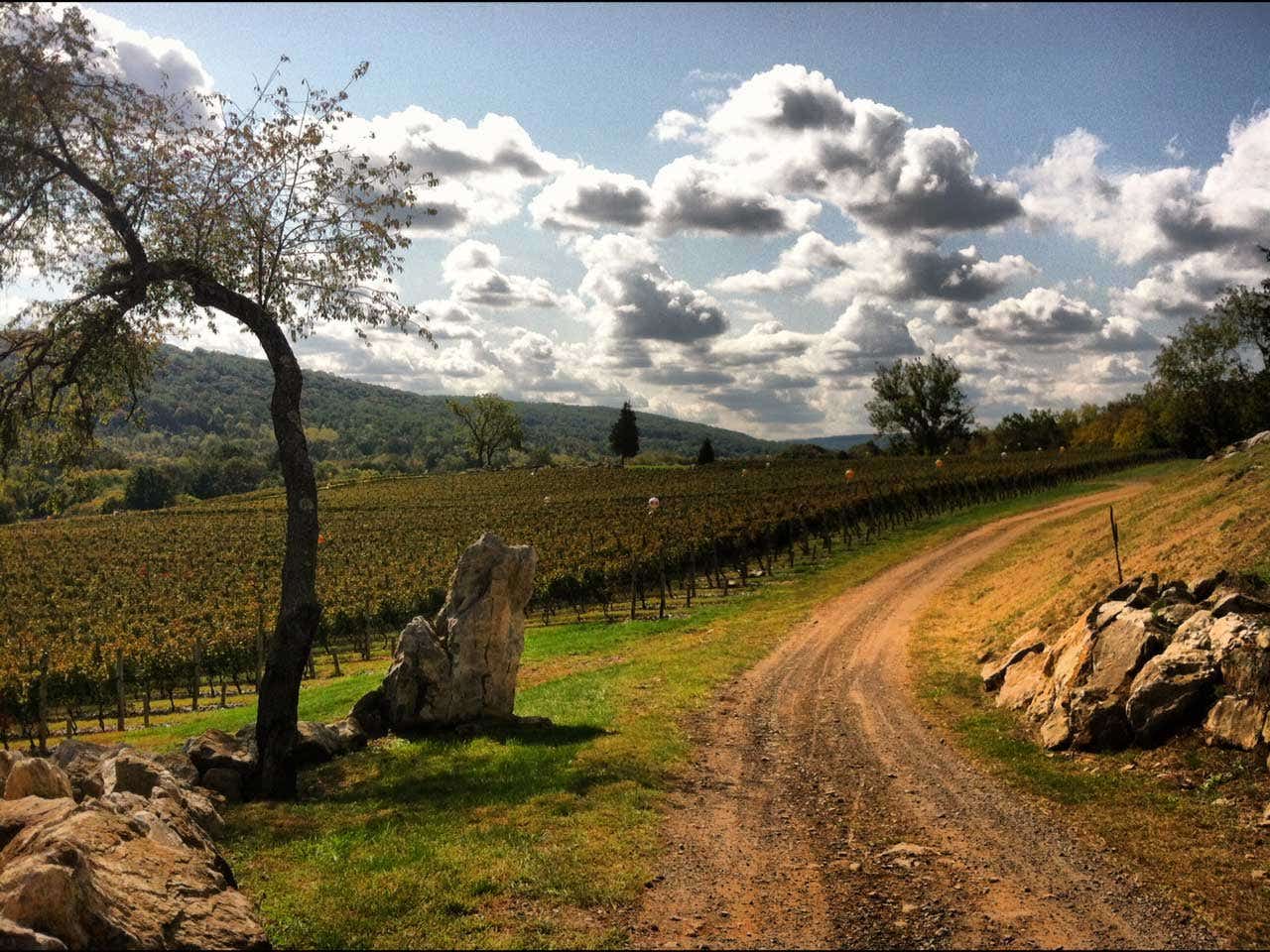
Yes, New Jersey Makes Wine—And It’s Good
Alan Richman journeys to New Jersey in search of a fine wine in the unlikeliest of places.
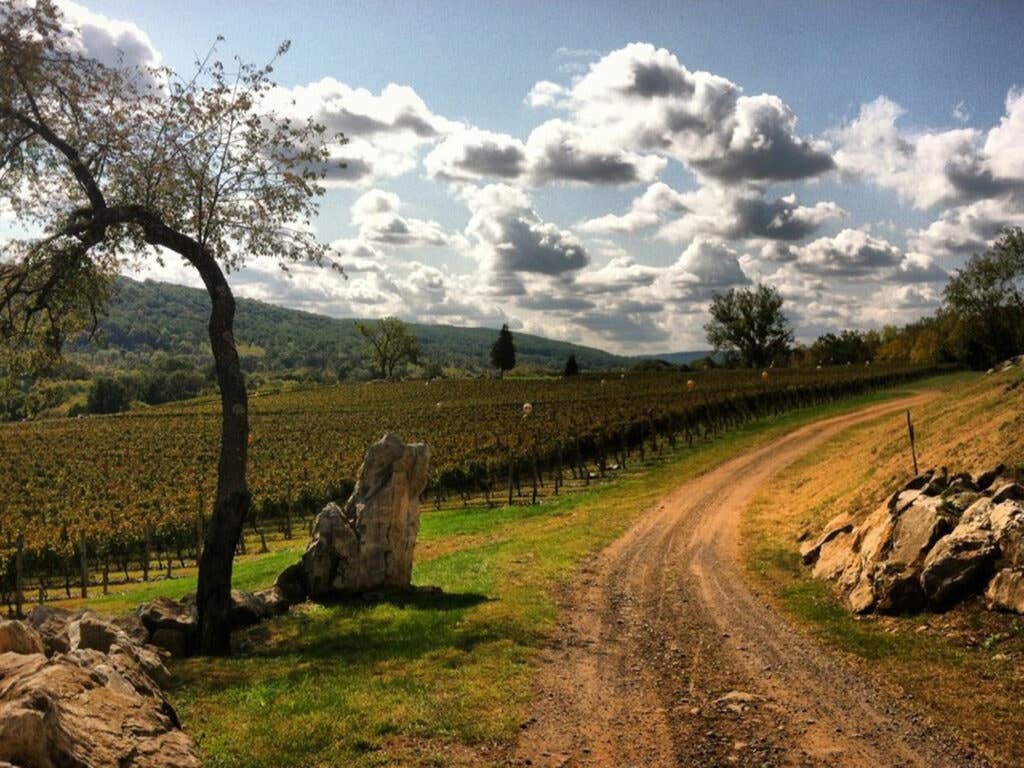
For the month of April, SAVEUR is all about New Jersey, the unsung hero state of American eating. Here's why. Read all our Jersey Month stories here.
To most New Yorkers, myself included, New Jersey is incomprehensible and impassible, an urban calamity. The timeworn cities and towns close to Manhattan are linked by decaying roads with incomprehensible signage, accessible only via gridlocked bridges and tunnels.
We all shudder at the infamous George Washington Bridge fiasco of 2013, when the malevolent staff of governor Chris Christie deliberately tied up traffic in some kind of sick political retribution.
I dread venturing into New Jersey, and I was born in New Jersey.
When I contemplated going to New Jersey for a day of tasting New Jersey wines—yes, wines made in New Jersey, of which there are many—I thought the best plan would be to get drunk before I started out. Friends convinced me this would be unwise.
We don’t get much New Jersey wine here in New York. Maybe none. Nobody in New York that I know has ever served a bottle of New Jersey wine at a dinner. For that matter, and this is alarming, nobody I know in New Jersey has ever served a bottle at dinner.
Somewhat out of desperation, New Jersey winemakers in 2012 conducted a competition they called Judgement of Princeton, modeled after the famous 1976 Judgment of Paris that compared California wines to French wines and vaulted American wines—at least those from that state—into prominence. The New Jersey competition mimicked the proceedings of 1976 but failed to bring glory to New Jersey, in part because the organizers selected mediocre vintages of French red wines and yet were unable to declare unconditional victory. The struggle has continued.
Not a single bottle of still wine from New Jersey can be found in the New York wine shops I patronize. (When I typed “New Jersey” into the search engine for Varmax Liquor Pantry in Port Chester, I got many delightful sauvignon blanc selections, but only because it confused New Jersey with New Zealand.)
I always knew New Jersey wineries existed. My parents drove by them when I was a kid, pressing a little harder on the accelerator as they came into view. Yet there exists a Garden State Wine Growers Association, which publishes a little booklet recommending that you “follow the wine trail through New Jersey’s most scenic and historic towns.” New Jersey, it seems, is the seventh largest wine-producing state in America.
It even has a city by the name of Vineland, although the official city website makes no mention of vines. In April it was still warning of incoming snow and ice, not a harbinger of a successful growing season ahead.
In fact, New Jersey has more than 50 licensed wineries, stretching from the very top of the state to the very bottom, a distance of about 200 miles. Logically, most are located toward the west, the more rural regions, although I was unable to identify any magical district, no Napa Valley of the East. I suspect that in the unlikely event such an incomparable region exists, it remains undiscovered, hidden in the virgin pine barrens of southern New Jersey.
When friends and I set out to visit four wineries reasonably close to New York City, we headed for the center of the state, in and around Lambertville. For our final stop, we drifted east, crossing Interstate 95 to arrive at Cream Ridge Winery, and we did so for a specific reason: One of the major eccentricities of New Jersey wine-making is the creation of wine from products not ordinarily utilized in wine. Cream Ridge excels at that, producing wine from native grapes such as Catawba, old-world grapes such as elderberry, and all sorts of fruit, from cranberries to mangoes. Almond and chocolate accents also appear.
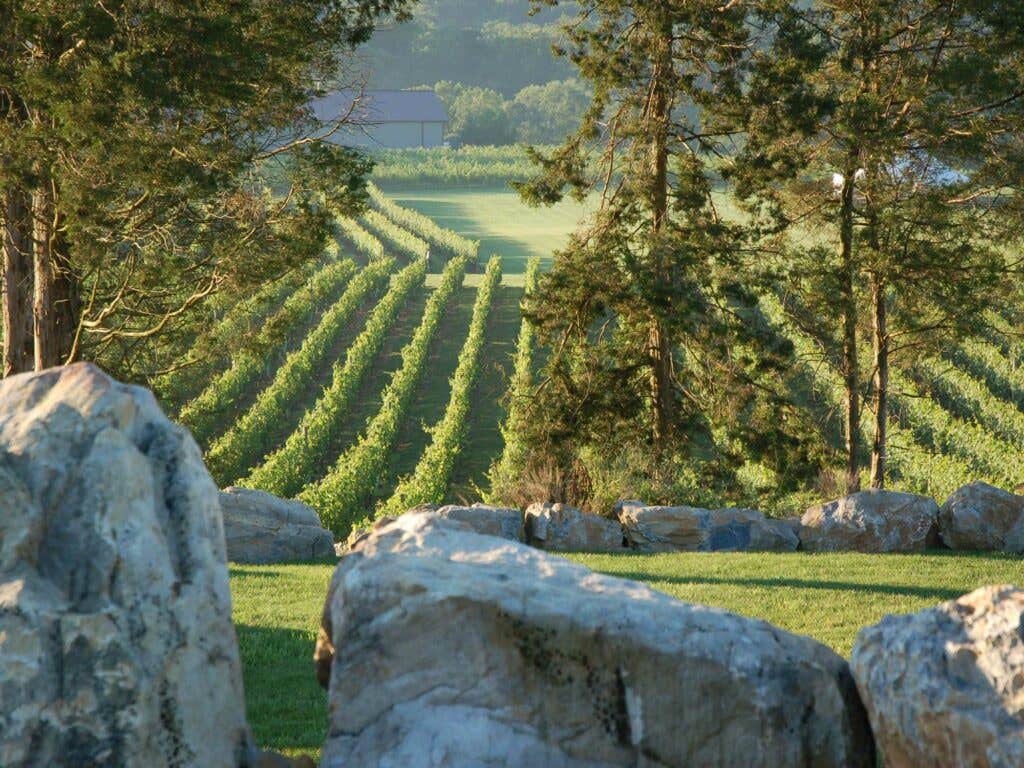
We did not follow any of the New Jersey wine trails that purportedly exist. We never saw any signs indicating that we were on or near a wine trail. We mapped our own route, heading almost due west from the Lincoln Tunnel. Soon we were in what to me passes for paradise: those aforementioned historic towns, rolling hills, other low-key rustic thrills. One of my passengers was so giddy with happiness that upon arriving at Alba Vineyard, in Finesville, our first stop, she cried out, "It's just like France!"
Perhaps not quite that, but the winery is charming, with a sloped driveway and stone walls covered with moss. No winery tour was offered, but one need only to request bathroom privileges to embark on a self-guided excursion. The winding path takes you past fermentation tanks, the bottling line, and, on my visit, a very intense wine geek hunched over his computer.
The place mat before each seat in the tasting room listed all the grapes that go into Alba’s wines—10 in all, which is certainly more than any one winery needs. Overhead is a banner citing awards won, including several New Jersey Winery of the Year honors.
I wasn’t fond of our first wine, a 2015 dry rosé made from the Chambourcin grape, an assertive, dark-skinned, French-American hybrid that turned out classier than its problematic parentage suggests. I found it oddly pungent. To be fair, my friends liked it.
The 2014 Estate Chardonnay was delicately oaked, light, fresh and clean, just right, and any thoughts I had that this adventure might end in disaster vanished. The 2014 Gewürztraminer possessed a spectacular nose of rose pedals, but the flowers faded upon tasting. The 2013 Pinot Noir was darker than expected and a touch earthy, all for the best, and the 2012 Chambourcin, which I feared after the rose experience, was delightful. We also tried three wines made from grapes shipped to the winery from Washington State --- Merlot, Syrah, and Cabernet Sauvignon. All were pleasant, but none worth the cross-country journey.
Beneduce Vineyards, in nearby Pittstown, is a visual joy, a miniature version of Blue Hill at Stone Barns, the spectacular agricultural and dining complex in Westchester County, New York. My first thought: Somebody has put money into this place, and that person turned out to be Michael Beneduce, a gardening mogul.
We purchased the $5 basic tasting package—all the wineries charged small fees for tasting—and we didn’t appreciate any of the five wines offered to us. The 2014 Chardonnay was easily the best, very oaky with a hint of citrus. (To be fair yet again, the Beneduce website is packed with kudos from other tasters.) One of my friends said of the 2014 Shotgun, a blend of three local red grapes, “It smells like firecrackers.”
The highlight of our visit to Beneduce was the Sky Café of Pittstown's Sky Manor Airport, just next door and easily reached by strolling across a field onto the airport grounds. It was like being back in the 1950's. A window seat in the restaurant comes with a view of single-engine planes and tiny helicopters taking off and landing. My sandwich was so huge only a Lockheed C-5 Galaxy strategic airlifter could have lifted it off the ground.
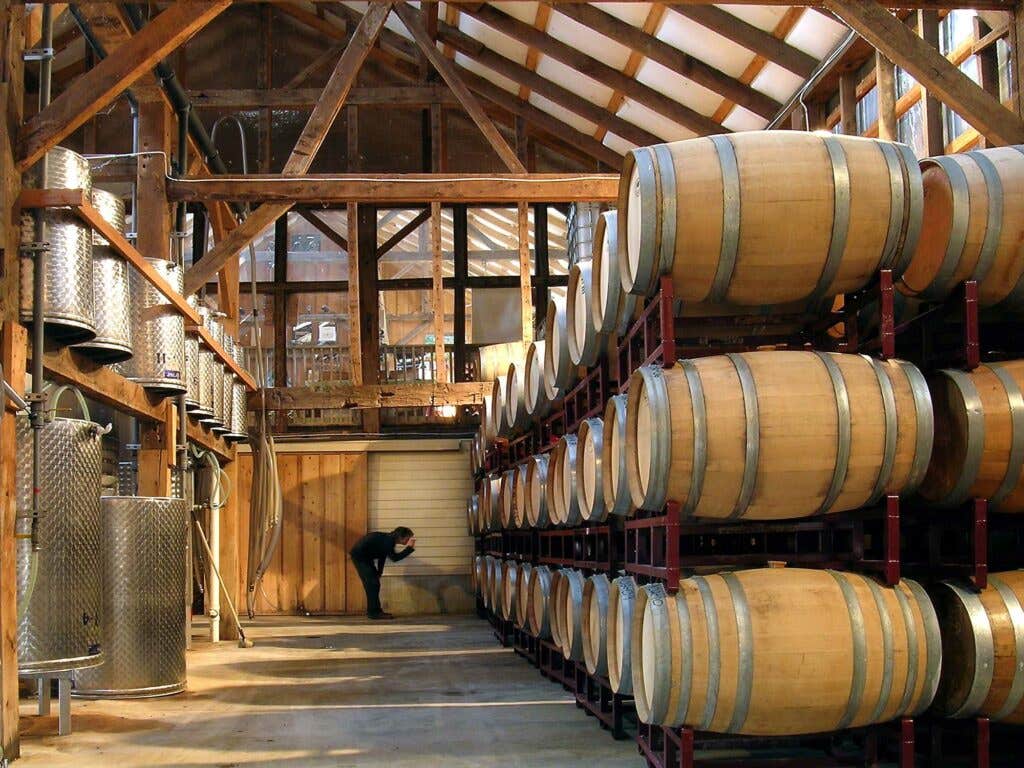
Unionville Vineyards, located in pastoral Ringoes, is another esteemed New Jersey winery. As we drove up, one of my friends said, "This looks like the set of a movie starring Hayley Mills," a child actress of the 50s and 60s. Unionville is a collection of four farms operated by local landowners, a kind of wine collaborative, although it doesn't call itself that. The winery sources grapes from five vineyards spread across three counties.
The tasting room offered three different vineyard-designated chardonnays, two at a relatively hefty $35.95 and a 2012 Pheasant Hill at $42.95. The Pheasant Hill easily outclassed the other two. A tart 2013 Counoise—Counoise is one of 13 grapes varieties that appear in France’s Chateauneuf-du-Pape—proved why this red grape requires assistance from 12 other grapes in order to taste good. The 2012 Syrah had a terrific nose, but was otherwise insubstantial. I admired the 2012 The Big O, a blend of Cabernet Sauvignon, Merlot and Cabernet Franc, all Jersey grown. It was dark, opaque, and peppery. I bought a bottle for slipping into a future Bordeaux-style blind tasting. We also admired the Vat 21 Port, blended from multiple vintages of Chambourcin.
Cream Ridge Winery, located in the flat plains of horse country—who knew that New Jersey had horse country?—is one of those quixotic New Jersey wineries that brews concoctions virtually unknown to most of the wine world. We got a taste of 11 wines for a fee of $5. The glass wasn’t included, but our pourer said, “If you swipe it, nobody is going to care.”
The winery was feverish with fun. Visitors, generously served, were roaring. From a printed sheet we checked off the 10 wines we wanted to taste, and the server poured us a little pomegranate wine as a bonus. We tried ChocolateBerry, blackberry wine infused with cocoa (oddly reminiscent of a Tootsie Roll pop) and JavaBerry, blackberry wine and espresso (smelled like candy-covered espresso beans). Our favorite, easily, was strawberry wine, with a pure strawberry nose. The myriad fruit wines of Cream Ridge are a reminder of the once-lauded agricultural diversity of the state.
A friend thought almost all the wines were too juvenile for adults, and said, “This place is like a soda shop.” She thought they would be just perfect quaffed on a quiet afternoon while playing with My Little Pony.
When the journey was over, we all realized that we had come to appreciate New Jersey wineries. The efforts were heroic, the results unforeseen, and the settings delightful. Most New Yorkers head due east to the North Shore of Long Island for their local wine excursions, but New Jersey wineries are a little closer, more euphoric, and much less predictable. Those multitudes of grapes, like them or not, make for stimulating tasting experiences.
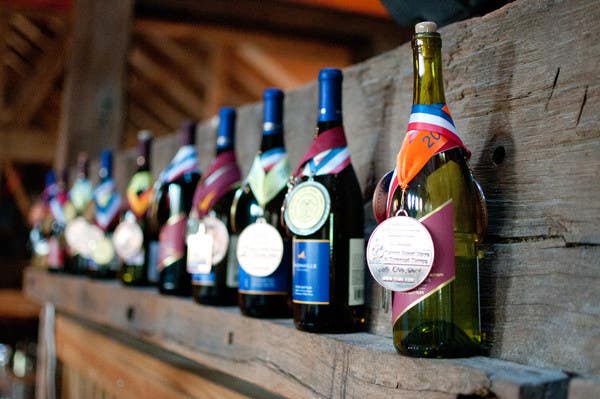
In most wine-growing regions of the world, a stop at four wineries would mean a taste of wines made from five or six grapes. The wines we tasted were made from 28 different grapes and other fruits, plus accents of almond, espresso and chocolate. A USDA report in 2012 pointed out that more than 80 varieties of grapes are now grown in the state and made into wine.
Plenty of New Jersey wines are good. The crucial flaw in wine production here is that growers have yet to determine what grapes are ideal for New Jersey, so they plant them all, seemingly with good intentions. Those 200 miles, north to south, Sussex County to Cape May, encompass a variety of terroirs. Rieslings are promising in the higher northern elevations; Bordeaux varietals could eventually thrive in the coastal plains of the south.
When I asked John Cifelli, general manager of Unionville Vineyards, why it has taken so long to sort through all these grapes, decide which ones grow best, he pointed out that Prohibition-era laws remained in effect until the mid-1980’s, hindering wine production for decades. “Until 1984,” he said, “the state allowed only one winery for every one millions citizens. There was no reason to grow grapes because there was nobody to buy them.”
I’ve never thought of wine-making entirely in terms of grape selection. That’s probably because almost all wine-growing regions I’ve visited figured out what grapes were appropriate long before I showed up. Few wine-producing regions are as young as those of New Jersey, a state we often think of as old and exhausted.
The New Jersey wine business might eventually prosper. That will happen when the winemakers stop doing much of what they do now and learn to do what they can do best. When word of that spreads, New Yorkers will realize that beyond the creaking bridges and crumbling tunnels, the detours and the skid marks, lie lavish landscapes, startling serenity, and wines too distinctive to ignore.
Keep Reading
Continue to Next Story










